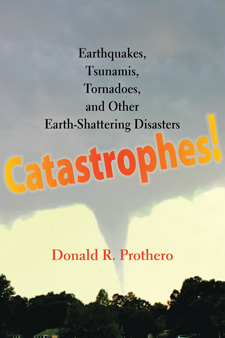A few weeks ago, the internet was abuzz with claims that scientists were predicting a “new Ice Age” around 2030. Many media outlets ran misleading pictures of people walking through frozen wastelands, and other wintry scenes. Naturally, the climate deniers immediately jumped on this as proof that global warming wasn’t going to happen, or that scientists can’t get their stories straight. My email and Facebook were flooded with questions from people asking me whether it was true, and what did it all mean?
This story is a classic case of bad journalism run amok. The original source was just a re-published press release of a talk not yet given by one solar scientist, Dr. Valentina Zharkova. She works on solar magnetism, but has absolutely no training in atmospheres or climate science. It is just an initial report of a new mathematical model for the magnetic field behavior of the sun. It is not a peer-reviewed study, nor is it even published yet, so it hasn’t had the slightest scientific scrutiny. Contrary to all the breathless reporting, it shows no actual data for how much solar radiation will be emerging in 2030—just that the magnetic activity of the sun would be different. Magnetic activity of the sun does not translate into a simple prediction of how much radiation reaches the earth. And nowhere in this unreviewed press release does the scientist make the actual claim that there will be a new ice age in 2030. That was entirely made up by the media which completely misinterpreted and misreported the minimal information in the study.
As “Bad Astronomer” and blogger Phil Plait says:
This has only a marginal effect on the Sun’s light/heat output. Also, if you listen to an interview with her on Radio New Zealand, you’ll hear some unusual claims, like the climates on other planets are changing due to the Sun—a red herring when it comes to climate change on Earth. She also admits at the end she doesn’t do atmospheric research, so the claim that lowered magnetic activity of the Sun can cause an ice age here on Earth is in my opinion shaky at best.
The only connection the study makes is that this type of solar activity was similar to that known from the well-studied “Maunder Minimum” that began in 1645. But that slight decrease in solar activity did not cause an ice age, but just added a bit to the cooling of the naturally-caused “Little Ice Age” which was only a few degrees of local cooling in the North Atlantic region (not a global cooling event). The Little Ice Age began well before the Maunder Minimum, and the current scientific consensus is that it was largely due to volcanic cooling, orbital variation, and oceanic/atmospheric feedback loops, with little or no effect from any slight difference in solar radiation. As a recent Nature Communications paper on this topic emphasized from the outset, “Any reduction in global mean near-surface temperature due to a future decline in solar activity is likely to be a small fraction of projected anthropogenic warming.”
Even if the study is correct and solar radiation would resemble the Maunder Minimum, its effect is minuscule compared to the orders-of-magnitude larger effect of greenhouse gases. As Phil Plait puts it:
Let me be very clear: no. I’ll repeat: NO. The overwhelming majority of scientists do not think this can happen. While changes in the Sun’s activity have a very marginal effect on global warming and/or cooling, human contributions to carbon dioxide in our atmosphere completely overwhelm the Sun’s influence. It’s like tapping on your brakes as your car plunges headlong into a brick wall at 100 kilometers per hour.
So any responsible journalist, confronted with an outrageous claim from an non-peer-reviewed abstract for a talk not yet even given would take a “wait and see” attitude on these claims—or contact reputable qualified scientists for a second opinion before running with their own spin on the story. But we no longer live in an age of responsible, informed science journalism. Instead, we have hack, tabloid journalism, where writers with no science qualifications spot a few words in an unpublished, unreviewed abstract, and fabricate a complete web of lies that bears no resemblance to anything the scientist really claimed, or anything that other scientists would agree with.
And that’s how rumors and lies about science and climate get spread far and wide…
